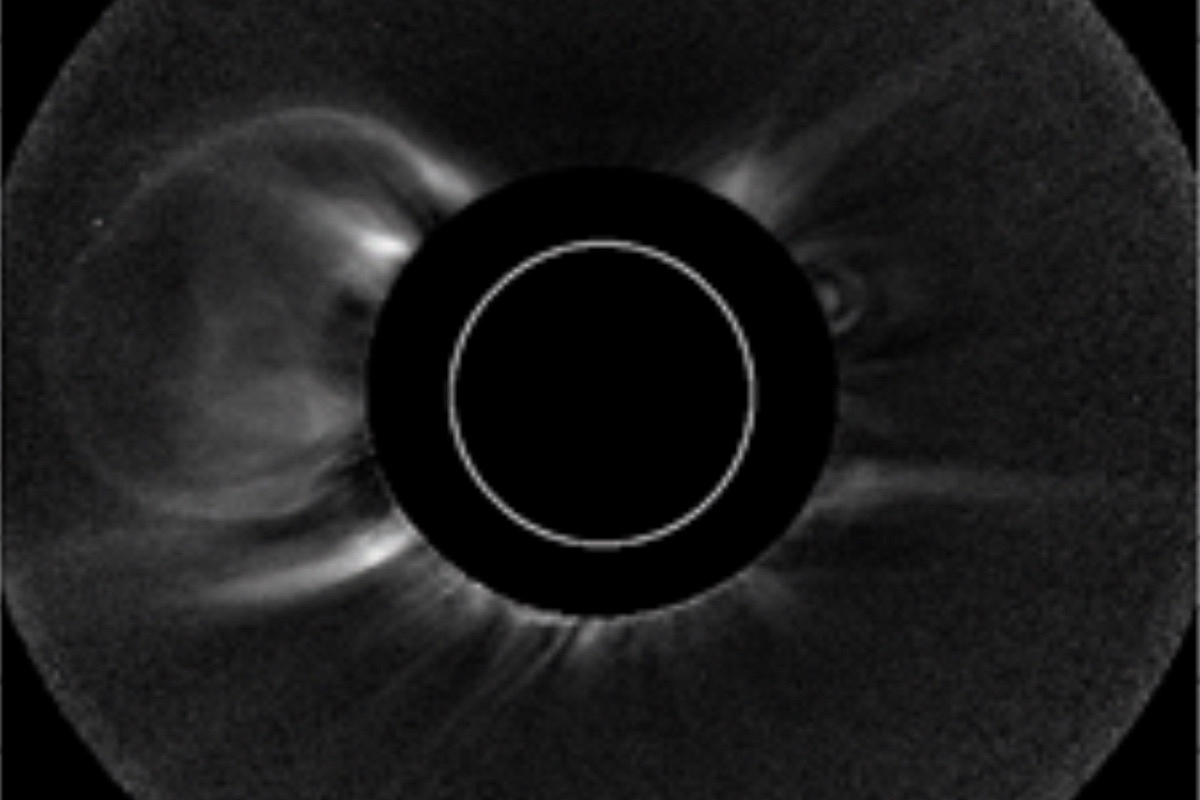Science
Indian Scientists' Simple Technique To Unravel Dynamics Of Solar Corona Can Help Detect Coronal Mass Ejections Better

Pic via PIB website
Indian researchers have developed a simple technique of separating the constant background of the Solar Corona and revealing the dynamic corona, an official release said on Friday (11 March).
The simple approach of subtracting the constant background can improve efficiency of identification of Coronal Mass Ejections (CME) -- events in which a large cloud of energetic and highly magnetized plasma erupts from the solar corona into space, causing radio and magnetic disturbances on the earth, the Ministry of Science and Technology said in a release.
It can also give a clear picture of the characteristics of CMEs and make their study easier, the ministry said.
Coronal mass ejections (CMEs) are dynamic structures in the Solar Corona and are capable of driving the Space Weather in near-Earth space. It becomes imperative to separate such structures and visually or automatically identify the CMEs through the radial distances in the images taken using coronagraphs.
The density of the outermost layer of the atmosphere of the Sun – Corona – decreases with distance radially outwards. As the intensity of the corona observed in white light depends on the density of particles in the atmosphere, it decreases exponentially. If the contrast between the constant corona and transient CMEs is not high, detection of CMEs becomes a challenge.
A new method developed by Ritesh Patel, Vaibhav Pant, and Professor Dipankar Banerjee from Aryabhatta Research Institute of Observational Sciences (ARIES), Nainital, along with Satabdwa Majumdar from the Indian Institute of Astrophysics (IIA), Bengaluru, called the Simple Radial Gradient Filter (SiRGraF), is capable of separating the background revealing the dynamic corona, the ministry said.
According to the ministry, the research has been accepted for publication in the Solar Physics journal.
This method, which subtracts the constant background, brings out the transient corona, followed by dividing the result by an azimuthally uniform background to reduce the radial decrease in intensity, the ministry said.
The combination of these two steps allows researchers to identify the structures such as CMEs throughout the field of view of the coronagraph images.
Support Swarajya's 50 Ground Reports Project & Sponsor A Story
Every general election Swarajya does a 50 ground reports project.
Aimed only at serious readers and those who appreciate the nuances of political undercurrents, the project provides a sense of India's electoral landscape. As you know, these reports are produced after considerable investment of travel, time and effort on the ground.
This time too we've kicked off the project in style and have covered over 30 constituencies already. If you're someone who appreciates such work and have enjoyed our coverage please consider sponsoring a ground report for just Rs 2999 to Rs 19,999 - it goes a long way in helping us produce more quality reportage.
You can also back this project by becoming a subscriber for as little as Rs 999 - so do click on this links and choose a plan that suits you and back us.
Click below to contribute.
Latest